
Finding the best movies Filmstruck —the streaming platform from Turner Classic Movies and the Criterion Collection—has on demand is all part of the fun of having a subscription to the service. A godsend for cinephiles, Filmstruck features an eclectic smattering of everything both companies have to offer, presented in crisp and clear HD, with transfers usually taken from the most recent restoration works.
For those unfamiliar with Filmstruck’s subscription options, a basic account comes with all of the films Turner Classic Movies claims, while some Criterion titles are available, but a separate upgrade allows you to access a considerable chunk of the rest of the Collection for a couple of extra bucks a month. Accordingly, the films on this list that require the Criterion Channel will have a ”(C)” next to the title.
Moreso, one of the most charming and distinctive features that Filmstruck offers over other streaming services is a monthly series of interviews with prominent actors, filmmakers, writers and other cultural figures about their favorite Criterion Collection titles (called “Adventures in Moviegoing”). November’s subject was writer-director Philip Kaufman, who seems to love him some Italian neorealism via such choices as Il Sorpasso, Bicycle Thieves and I Vitelloni (included below).
This month also brought out a feast of curated collections, which we’ve tried to reflect in the following list, including “Early Frankenheimer,” “Blue Christmas,” “Herzog & Kinski” and “Memories of Hiroshima.” The service is constantly offering up new curatorial mini-collections, so chances are you’ll find something completely new when you next log in anyway.
So, rather than attempt to put together a definitive Top 10, we’ve compiled the following movies with the hope that each will inspire a deeper dive into a specific genre, director, country, era and more. Be it classic or curio, Filmstruck has plenty to discover.
Here are 10 great movies to watch on Filmstruck this month:
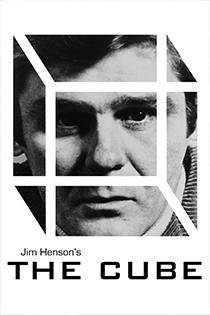 10. The Cube
10. The Cube
Year: 1969
Director: Jim Henson
An unnamed, common-looking man (Richard Schall) wakes up in a small bedroom-sized cube lined top to bottom with white tiles. He has no idea how he got there, why he’s there or if he can even get out of there at all. As people walk in and out of the cube, giving him more questions than answers, as furniture keeps appearing and disappearing out of the blue, as absurd items like chocolate bunnies and wall replacement parts shaped exactly like the hole he smashed through one of the tiles are thrown at him without any sense of context or purpose, the man becomes increasingly troubled with deeply disturbing notion: Is this some sort of a sick experiment? Is he dead? Is this hell, or limbo? The fact that such subversive material that takes endless delight out of its wanton absurdity was once shown on network television as part of a program titled NBC Experiment in Television, is kind of a miracle. The fact that it was co-written and directed by Jim Henson makes it an especially rare treat. As much as we associate Henson with the Muppets, The Cube is actually on par with his existentially curious artistic cries for help from the period. For proof, track down his 1965 Oscar winning Short film, “Time Piece,” a manically edited series of match cuts about the unstoppable passing of time. Regardless, The Cube is a Kafkaesque nightmare melded with some serious late ’60s whimsy. (Notably, Filmstruck has The Cube, “Time Piece” and many other shorts from Henson.) —Oktay Ege Kozak
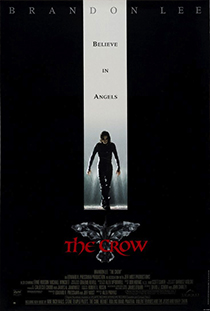 9. The Crow
9. The Crow
Year: 1994
Director: Alex Proyas
Alex Proyas’s gothic cult classic, in which Brandon Lee’s Eric Dravin flits from rooftop to rooftop, makeup supernaturally intact, is almost hilariously bleak, a sort of Hot-Topic-toned cousin to something from Hermann Warm’s wettest of dreams. Because of that, The Crow is either something completely understood, an object with which a select few audience members can truly sympathize, or something to be consumed in bewilderment—like an H.P. Lovecraft story or what Rob Zombie does. After this and Dark City (1998), it became clear that a studio could put their trust in Proyas to later take over the Blade brand (however successful): So shamelessly stylized and earnest is Proyas’s emo heart. —Dom Sinacola
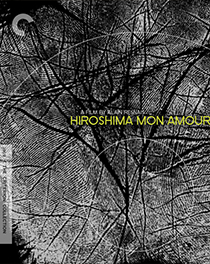 8. Hiroshima Mon Amour (C)
8. Hiroshima Mon Amour (C)
Year: 1959
Director: Alain Resnais
Alain Resnais’s 1959 masterpiece begins like a documentary, one reminiscent of his harrowing 1955 nonfiction short Night and Fog, except focused on the aftermath of the atomic bomb dropped on Hiroshima during World War II. Instead of an omniscient voiceover narrator, however, we hear what we eventually discover are two lovers: a French actress (Emmanuelle Riva) and a Japanese architect (Eiji Okada) who, in the present day, have met in Hiroshima are both carrying on extramarital affairs with each other, even as they realize it can’t last. It sounds like pure Casablanca-like forbidden romance, but under Resnais and screenwriter Marguerite Duras, Hiroshima Mon Amour touches on broader ideas: chiefly, the potential impossibility of art to measure up to personal experience and memory. The man’s repeated incantations to the woman that “You saw nothing in Hiroshima” suggests a level of perspective on the horrific event that even she, starring in a well-meaning “movie about peace,” can’t possibly access. She can only try to identify through her own experience as a tormented outsider in the village in which she grew up—but really, how can even that possibly measure up to the devastation of such a horrific event? Even Hiroshima itself, as captured in black-and-white by cinematographers Sacha Vierny and Michio Takahashi, seems to want to try to forget its past, by covering it up in a preponderance of neon lights. Resnais aids Duras’s reflections on history and memory with a then-groundbreaking editing style that fluidly goes back and forth between past and present. The enduring miracle of Hiroshima Mon Amour, though, is that all its formal and philosophical ambition doesn’t obscure the poignance of its central romance, especially with Emmanuelle Riva’s indelible expressions of passion, anguish and regret. —Kenji Fujishima
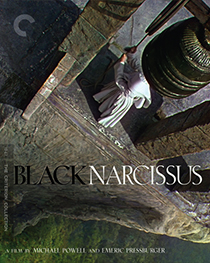 7. Black Narcissus (C)
7. Black Narcissus (C)
Year: 1947
Directors: Michael Powell, Emeric Pressburger
A melodrama set in a convent in British-ruled Himalayan India, directed by Michael Powell and Emeric Pressburger and starring Deborah Kerr and David Farrar, Black Narcissus provides a recipe for … strangeness. And it’s a beautiful kind of strangeness. Five nuns are sent to establish a convent, school and hospital in a former harem. It’s difficult to adapt to the new surroundings, and the agent who’s on call to help them do it is, well, he’s a bit of a temptation. There are tragic consequences, naturally. The story’s compelling enough, but what really blows me away about this film is the otherworldly visual sensibility. Powell’s camerawork is mesmerizing and the film is steeped in supersaturated color, underlining the exoticism and confusion faced by the nuns, sending the viewer to another dimension. —Amy Glynn
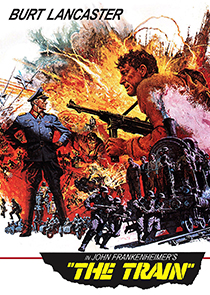 6. The Train
6. The Train
Year: 1964
Director: John Frankenheimer
Like most of director John Frankenheimer’s output during the ’60s, The Train is a meticulously constructed and executed thriller unafraid of dealing with complex themes and adult ideas. Its premise is very simple, which is wherein its efficiency lies: Mere days before the Allies liberate Paris from Nazi occupation, a Nazi commander named Von Waldheim (Paul Scofield) becomes obsessed with transporting a train full of priceless artwork from France to Germany. Once the train crosses the border, the fate of these works, many of which are from French masters, will be unknown. It’s up to a small group from the French resistance, led by Labiche (Burt Lancaster), a headstrong man who’s also worn out from years of fighting the occupation, to make sure that the train remains in France until the Allies arrive. Frankenheimer pointedly subverts accepted World War II pieties, but key to The Train’s provocative spin on simplistic good-versus-evil binaries is the way it characterizes both these characters. Von Waldheim may be on the wrong side of history, but he’s an aesthete who genuinely cares for the art he’s bringing back to this home country. Labiche, on the other hand, is a classic taciturn brute who cares more about revenge than about the art that he’s ostensibly rescuing, and by extension the beauty they represent amid a world gone mad. The beauty of Frankenheimer’s film is that it manages to sneak in such humanistic undercurrents within the confines of an electrifying action thriller, all the way to a final confrontation that leaves a bitter aftertaste even as the “right” party emerges victorious. —Oktay Ege Kozak and Kenji Fujishima
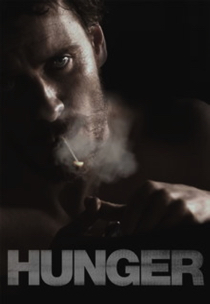 5. Hunger (C)
5. Hunger (C)
Year: 2008
Director: Steve McQueen
Hunger exists in minutiae and mundanity and excruciating detail—in long takes and philosophical discussions with no end and lots of pain, both physical and existential. Director Steve McQueen’s (Shame, 12 Years a Slave) feature-length debut understands that the human body is the last battlefield over belief, that nationalism, politics, religion and civil rights will always, eventually come down to the flesh—to whether or not we have full control over ourselves—and so in this recounting of the 1981 hunger strikes by Republican prisoners in Northern Ireland, McQueen focuses on the visceral drudgery of political action. McQueen would go on to further explore the ways in which physicality can be expressed on film as thematically as it is immersively (especially in Shame, also starring Michael Fassbender, which is perhaps his most direct examination of belief and the limits of the flesh), but in Hunger he so seamlessly juxtaposes the quotidian with historic events that you can’t help but watch his film and feel it—all the way down to your guts. —Dom Sinacola
 4. The Samurai Trilogy (C)
4. The Samurai Trilogy (C)
Years: 1954-1956
Director: Hiroshi Inagaki
The Seven Samurai gets a lot of mainstream credit for being the samurai movie’s defining epic, but we should probably fix that and give equal kudos to Hiroshi Inagaki’s massive, three-chapter chronicle of the life and times of Miyamoto Musashi (Toshiro Mifune), a legendary swordsman and the author of The Book of the Five Rings, essentially a text devoted to the subject of kicking ass. Maybe the comparison to The Seven Samurai isn’t fair to The Seven Samurai: That’s a single three-hour movie in contrast to three movies each in the ballpark of 90 to 140 minutes in length. Simply put, The Samurai Trilogy is epic defined, wrought as cinema that helped shape the samurai film alongside Kurosawa’s watershed picture. (It’s worth noting that the first chapter of Inagaki’s trilogy, Samurai I: Musashi Miyamoto, opened in 1954, the same year as Seven Samurai. It’s only natural to stack the two against each other.)
The Samurai Trilogy is a work of enduring maturity, capturing Musashi’s arc of growth as a fencer, and as a man, over the course of years spent dueling, studying and tending his very soul. The films alternate between mediation and action, both in context as individual movies and as parts of a greater whole; Samurai II: Duel at Ichijoji Temple in particular emphasizes action more than its siblings, ending with a massive battle between Musashi and a horde of bad guys in need of a few sword slashes apiece. But even so, that movie can’t help being about tenets of samurai discipline, and the search for self-improvement through marriage of mind and body. Combined, Inagaki’s films make up the most sweeping, romantic and rigorous production of its kind, bolstered by what’s arguably the most sophisticated and nuanced performance of Mifune’s career. —Andy Crump
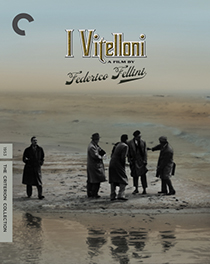 3. I Vitelloni (C)
3. I Vitelloni (C)
Year: 1953
Director: Federico Fellini
If there’s any lesson worth learning from the history of Italian cinema, it’s that it’s generally unwise to bet against Federico Fellini. In most instances where producers or distributors cast a shadow of doubt on his films’ potential for success, the films in question performed so well you’d swear they had minds of their own. It’s as if the movies, their value called into question, actively revolted against the qualms of Fellini’s superiors and hustled hard to make a buck at the box office. Take I Vitelloni: Fellini’s producer, Lorenzo Pegoraro, deflected the pleas of the distributor to shoot a new, upbeat ending that would utterly defeat the movie’s intentions, not only as semi-autobiography, but as a cohesive story. (Short version: The sudden discovery of an oil well in the film’s setting affords its characters instant wealth and happiness, leading to cheerful sing-song. Seriously.) Good thing he did, too. I Vitelloni was a hit, commercially and critically, so much so that it became the very first movie in Fellini’s body of work to receive distribution outside of Italy. Chalk that up to its universality. Whether you’re Italian, French, American or any other nationality, you probably recognize a little of yourself in Fellini’s cast, their hopes, their dreams, their ambitions—or lack thereof. —Andy Crump
 2. Stalker (C)
2. Stalker (C)
Director: Andrei Tarkovsky
Year: 1979
“Once, the future was only a continuation of the present. All its changes loomed somewhere beyond the horizon. But now the future’s a part of the present.” So says the Writer (Anatoli Solonitsyn) in Andrei Tarkovsky’s Stalker, somewhere deep in the Zone, contemplating the deeper trenches of his subconscious, of his fears and life and whatever “filth” exists within him. “Are they prepared for this?” he asks.
In Tarkovsky’s last Soviet film, the director seems to be admitting that what he’s feared most has come to pass. What that means is of course nebulous for a viewer not steeped in the director’s life or in the history of the country that was both home and hostile to him and his work throughout most of his life. Based very loosely on Roadside Picnic, a novel by brothers Boris and Arkady Strugatsky (who also wrote the screenplay), Stalker imagines a dystopic future not far from our present—or Tarkovsky’s present, before the fall of the Berlin Wall or the devastation of Chernobyl—in which some sort of otherworldly force has deposited a place humans have called “the Zone” onto Earth. There, the laws of Nature don’t apply, time and space thwarted by the hidden desires and wills of all those who enter it. Of course, the government has set up cordons around the Zone, and entry is strictly prohibited. Guides/liaisons called “stalkers” head illegal expeditions into the Zone, taking clients (often intellectual elites who can afford the trip) into the heart of the restricted, alien area—in search of, as we learn as the film slowly moves on, the so-called “Room,” where a person’s deepest desires become reality. One such Stalker (Aleksandr Kaidanovsky) is hired by the aforementioned Writer and a physicist (or something) known only as the Professor (Nikolai Grinko) to lead them into the Zone, spurred by vague ideas of what they’ll find when they reach the Room. The audience is as much in the dark, and through Tarkovsky’s (near-intolerably) patient shots, the three men come to discover, as do those watching their journey, what has really brought them to such an awful extreme as hiring a spiritual criminal to guide them into the almost certain doom of whatever the Zone has waiting for them.
And yet, no context properly prepares a viewer for the harrowing, hypnotic experience of watching Stalker. Between the sepia wasteland outside the Zone (so detailed in its grime and suspended misery you may need to take a shower afterwards) and the oversaturated greens and blues of the wreckage inside, Tarkovsky moves almost imperceptibly, taking the rhythms of industry and the empty lulls of post-industrial life to the point of making the barely mystical overwhelmingly manifest. Throughout that push and pull, there is the mounting sense of escape—of Tarkovsky escaping the Soviet Union and its restrictions on his films, maybe—as equally as there is the sense that escape should never be attempted. Because some freedom, some knowledge, isn’t meant for us. —Dom Sinacola
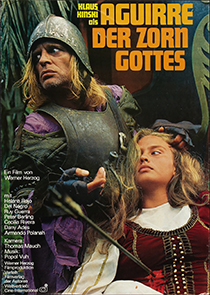 1. Aguirre, the Wrath of God
1. Aguirre, the Wrath of God
Year: 1972
Director: Werner Herzog
The Rosetta Stone to understanding the relationship between director Werner Herzog and actor Klaus Kinski is contained within watching the way Herzog sees Kinski as Aguirre, the Conquistador circa 1560 who, through the sheer power of his belligerence, led a small army of Spaniards to their certain doom. In Kinski’s disturbing, hobbled presence, Aguirre is delusion manifest, his need to find the lost City of Gold while trekking through the unforgiving rain forests of Peru so corrupt and surreal it appears to be crippling his body from the inside out, crawling free from his heart and out through his bug-eyes. Herzog exploits that delusion when he casts Kinski—known IRL for his self-aggrandizing optics—and in Aguirre, the Wrath of God is no purer sense of just how wholly Herzog knows Kinski’s true nature, letting the delusion at the core of the film seep into the reality of the film itself: “Based on a true story” wasn’t so debased a cinematic term until Fargo took up the challenge decades later. Which is pretty much how Herzog treats true stories anyway—his documentary subjects he’s known to openly manipulate, and even Paul Cronin’s Herzog on Herzog book, a series of conversations amounting to a career retrospective, Cronin prologues with a lengthy explanation for how involved Herzog was in editing and rewriting his own interviews. What’s left in lieu of fealty to the story of Gonzalo Pizzaro’s ill-fated expedition is something so much more visceral: A reenactment of the story’s—and therefore History’s—pain, absurdity and grand illusion. —Dom Sinacola